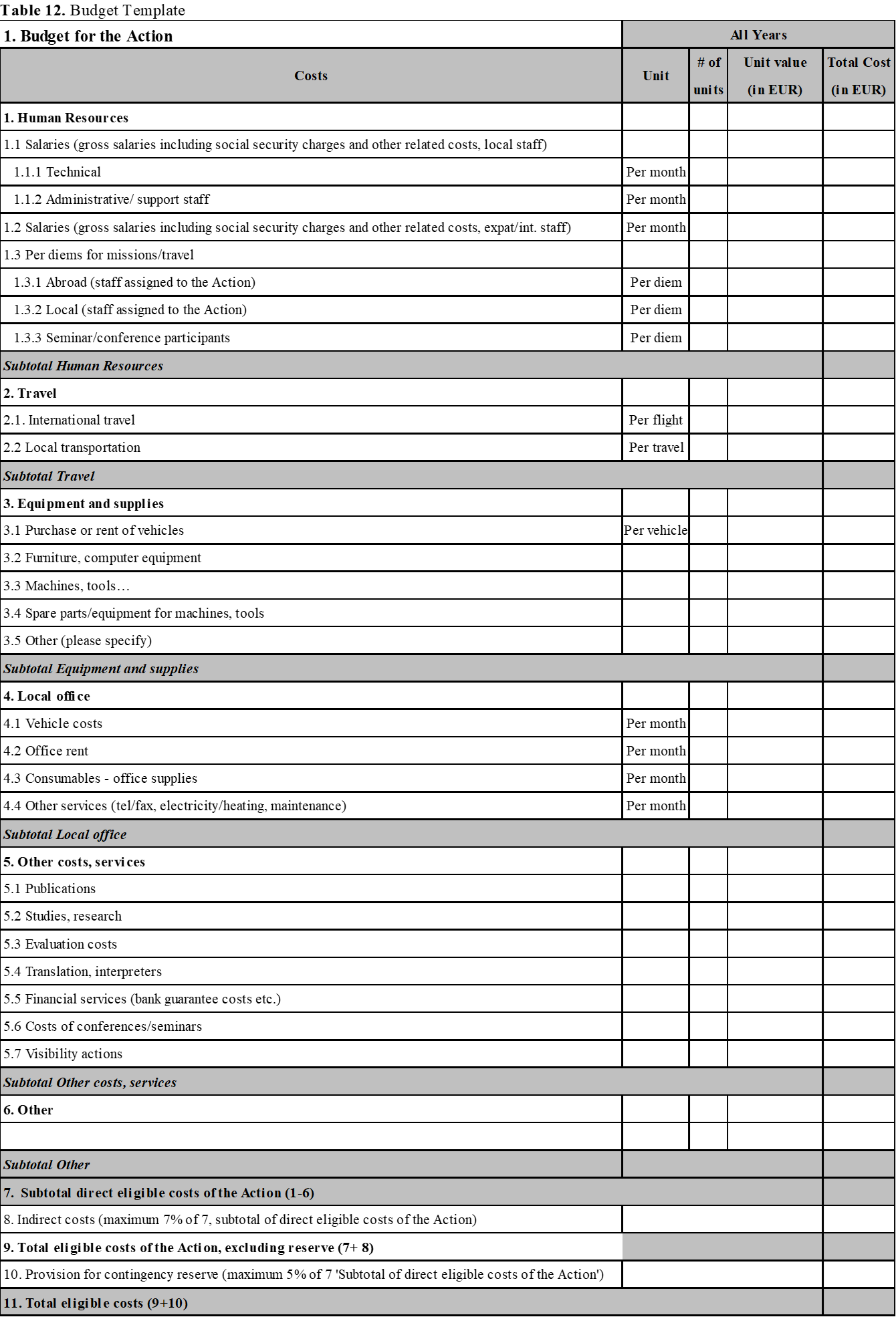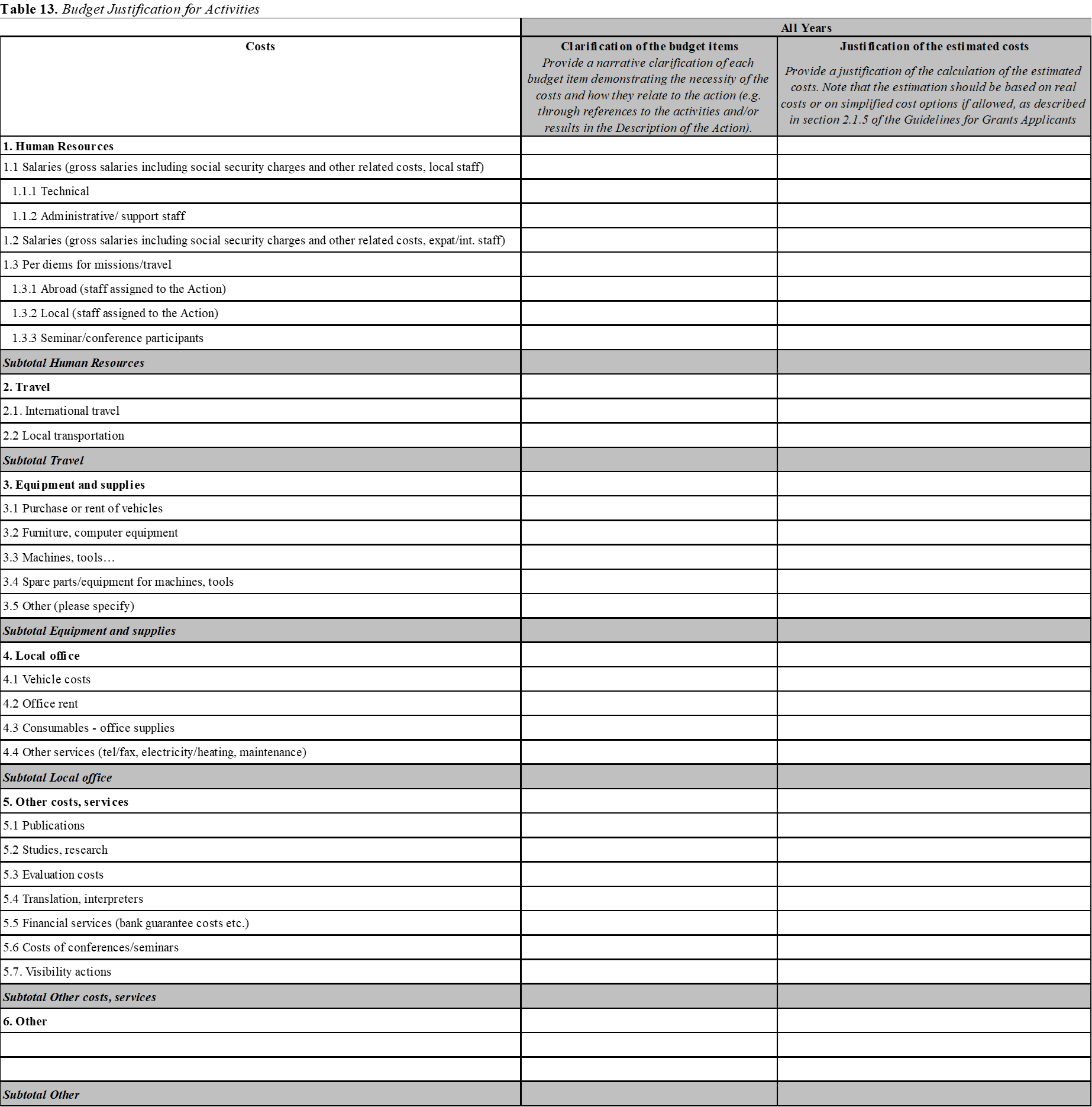Summary: Focuses on clarifying budget items to ensure accurate estimation and allocation of resources. Emphasizes the importance of detailed budget planning in aligning financial resources with project objectives and activities.
Explores potential sources of funding for the project and the process of securing financial resources. Discusses techniques for estimating project costs and developing a summary of estimated costs to inform budget planning and resource allocation decisions.
Learning Objectives:
- Learn techniques for clarifying budget items to ensure accurate estimation and allocation of resources.
- Understand the importance of detailed budget planning in aligning financial resources with project objectives and activities.
- Identify potential sources of funding for the project and understand the process of securing financial resources.
- Learn how to estimate project costs accurately and develop a summary of estimated costs to inform budget planning and resource allocation decisions.
In the proposal you need to provide a narrative clarification of each budget item demonstrating the necessity of the costs and show how they relate to the action (e.g. through references to the activities and/or results in the Description of the Action).
In this section you need to justify the necessity of the budget item. You should specify in which activities you will use the budget item. You can also reference the abbreviations and numbers you have given to the activities. While justifying the activities, you should not forget to indicate how much of each unit is used in the relevant product / service item.
In the column on the right, you will need to justify the costs. While justifying the costs, you can state that some costs related to the employer are calculated as well as the inflation, the changes caused by the supply / demand that you foresee, tax and social security deductions for human resources. In addition, in some programs, they may request you to get a price quote for product / service items above a certain budget limit. In this context, you can state that you have received price offers from companies. For standard goods, products and services, unless otherwise stated, you can do your market research on the internet and state this in the justification section.


In the 3. Expected sources of funding & summary of estimated costs section, you are expected to detail how the co-financing will be provided. As mentioned, some grant programs expect beneficiaries to contribute a certain amount to the project. The amount of this contribution may differ from program to program. Generally, programs do not accept in-kind contributions as co-financing, but show the use of human resources as an exception. In other words, if you assign the person or people you employ in your institution during your project, you will not have to allocate any financial installments for co-financing the project. This may apply to your partners as well as to the coordinator. On the other hand, making extra contributions to the project and providing financing opportunities can have a positive effect on the evaluator (even though it is not included in the written evaluation criteria).
If we go through the 3. Expected sources of funding & summary of estimated costs one by one:
In the EU contribution sought in this application (A) section, you must specify the amount and rate of support to be received from the granting institution (you can calculate the rate part by writing a formula in excel or after entering all the total amounts).
As can be seen in the CO-FINANCING (1+2) (B) part, there are 2 subsections. The first of these is the 1. Other contributions (Applicant, other Donors etc) section. In this section, you must write down the cash contributions of your institution, partners and 3rd parties to the project, and the value of the human resources contributions in terms of the relevant currency. In addition, in this section, you must specify the names of your institution, each of your partners and/or the donors and the conditions, if any. When calculating the contributions to be made through human resources, you should consider and specify the gross wage payments, not the net wage payments you make to the personnel. During the execution phase of your project, you will be asked for the assignment letter and payrolls of the relevant person(s) to prove these contributions. The gross amount on the payrolls will show your contribution. If the amount on the payrolls of the persons in charge is below the amount of co-financing requested by the program, the difference will have to be covered in cash. On the other hand, assigning more people than necessary to meet this co-financing with human resources may result in a score being deducted from the relevance part of the project by the independent evaluator.
In the second subsection, the estimated amount of the revenues obtained from the project is requested. If your project does not generate income from the production of any product and/or service, you can leave this section blank, otherwise you have to specify your estimated income amount. It can be said that there is an unwarranted perception that project calls for proposals or grant programs are not expected to generate income or value because they generally have social purposes. In fact, it is very important for your project to create financing by generating value, in terms of strengthening its sustainability. Explaining how you will create a structure that will generate income and value in the sustainability part of your proposal form and presenting it with a realistic analysis will ensure that your proposal receives a very high score in these parts as a result of the evaluation. However, in short-term projects, it may be difficult to establish and operate a structure that can generate income, value and profit. In this case, you can specify that the structure / model you have installed can be fully implemented after your project is completed. Since your project will not generate income during the execution phase, you do not have to make any income estimates in this section. You can also mention about your model that will generate income in the sustainability section.
It is important that you determine the amount you expect to earn in the estimated income section realistically, taking all risks into account. As a matter of fact, when you state the amount you expect to receive as excessive, but this expectation is not fulfilled, you may have to complete the amount of co-financing in question from other sources. This can put your institution, your partners and your project in a difficult position.
In the Estimated Costs section, you are expected to specify your estimated costs.
Estimated TOTAL ELIGIBLE COSTS shows the total cost in section 11 of Table 1 of the budget. When you compare the amount of support in the EU contribution sought in this application (A) to the total cost (A/C x 100), it will give you EU contribution expressed as a percentage of total eligible costs.
In the last part, the Budget Distribution Table Among the Applicants, the budget distributions of the coordinators and partners are specified. When specifying these budget allocations, you must include not only the grant received, but also the co-financing amounts (per institution, if any). The ratio of each partner's budget to the total project budget will give you the percentage distribution of the partners.





